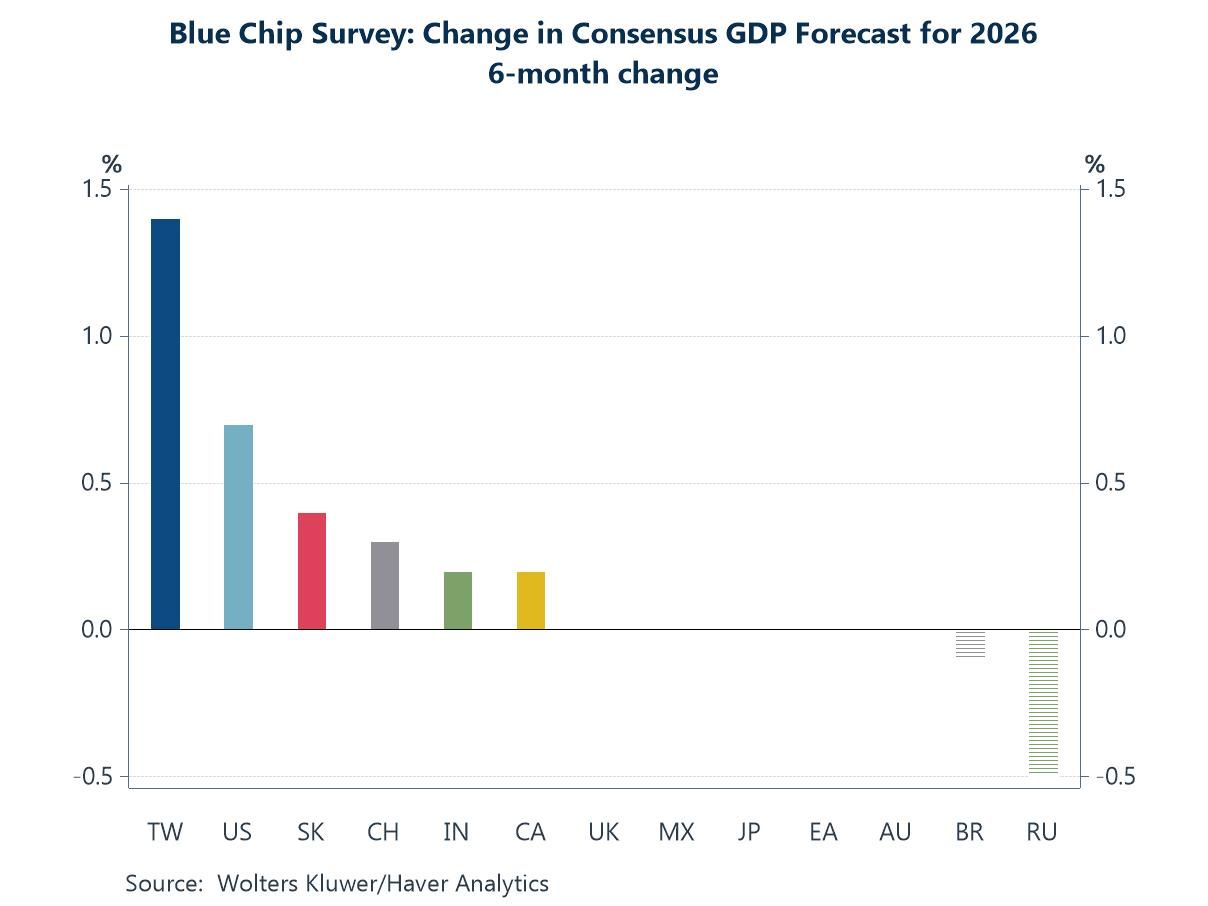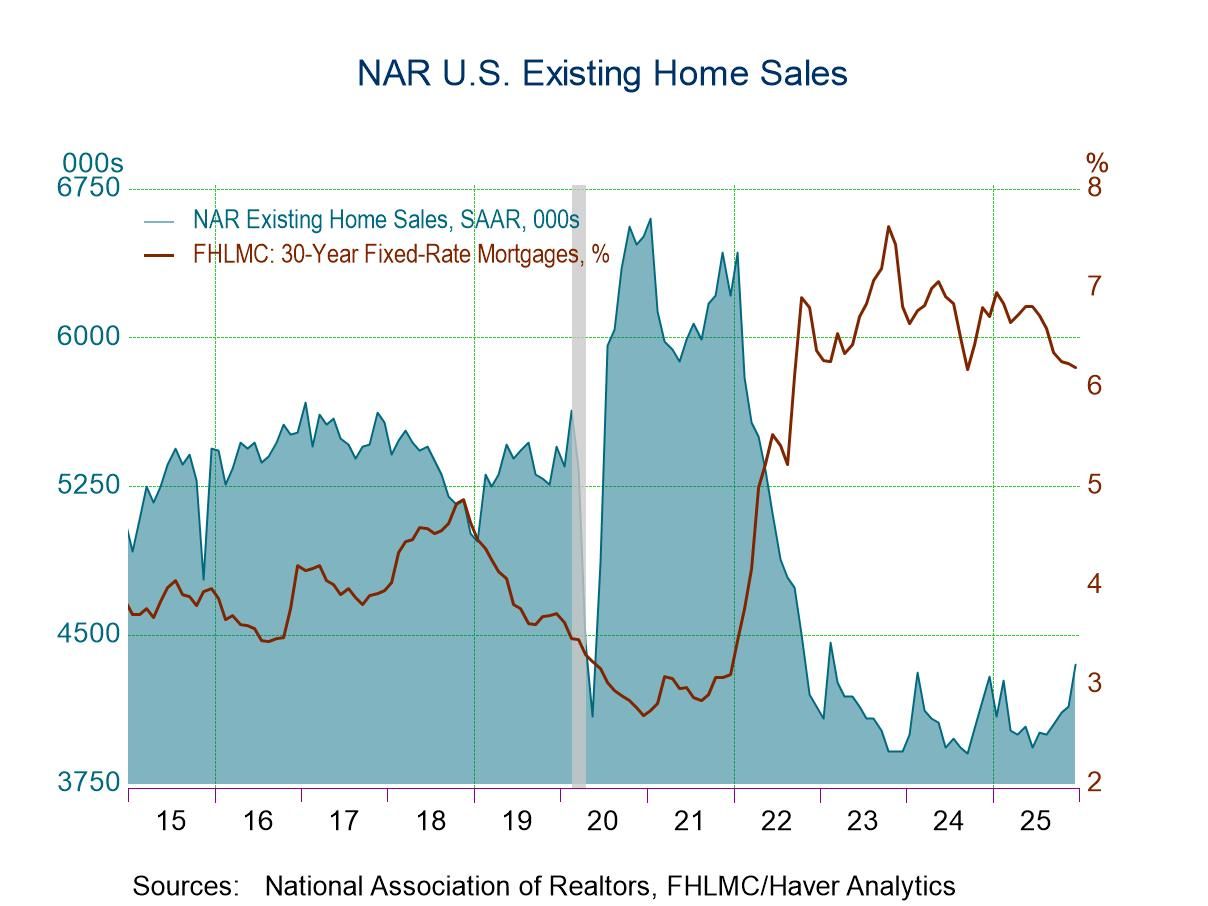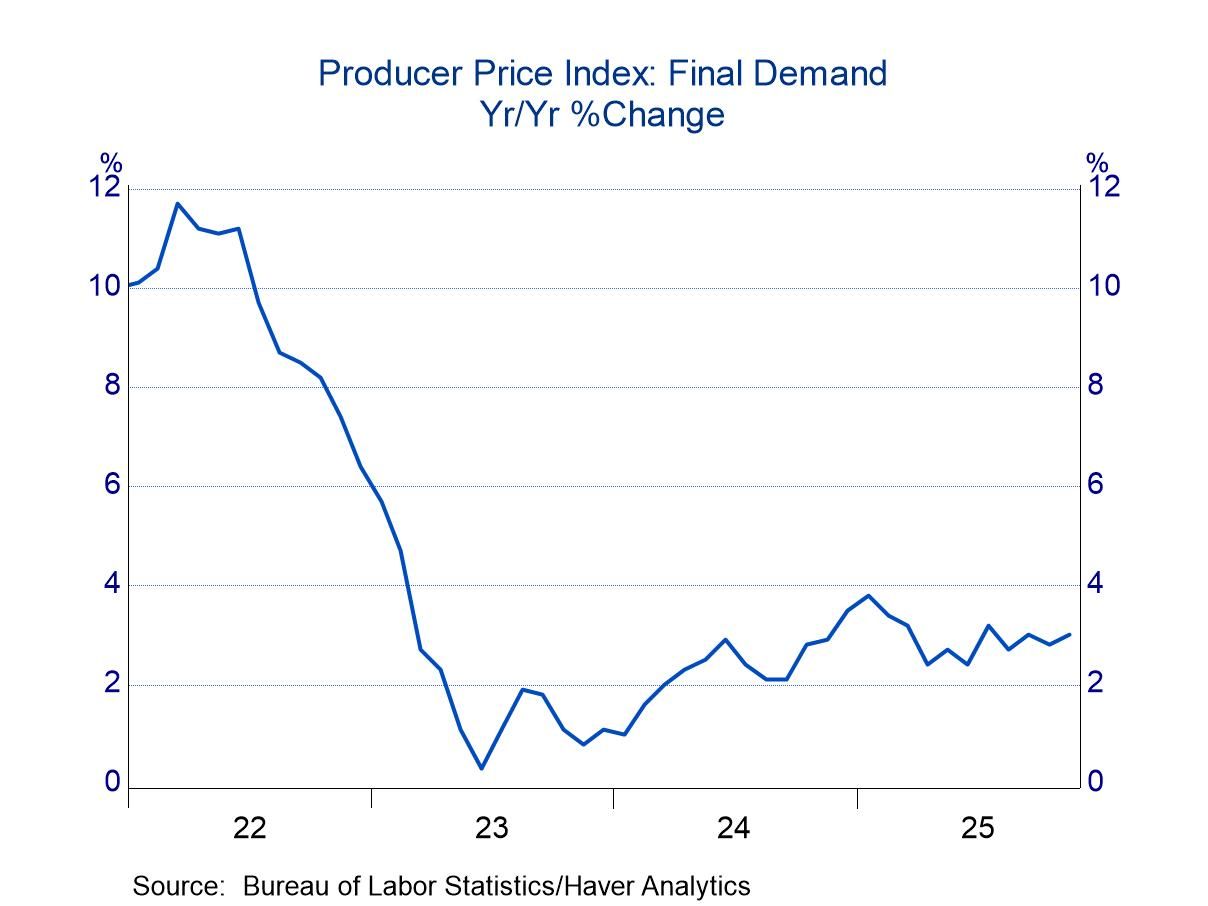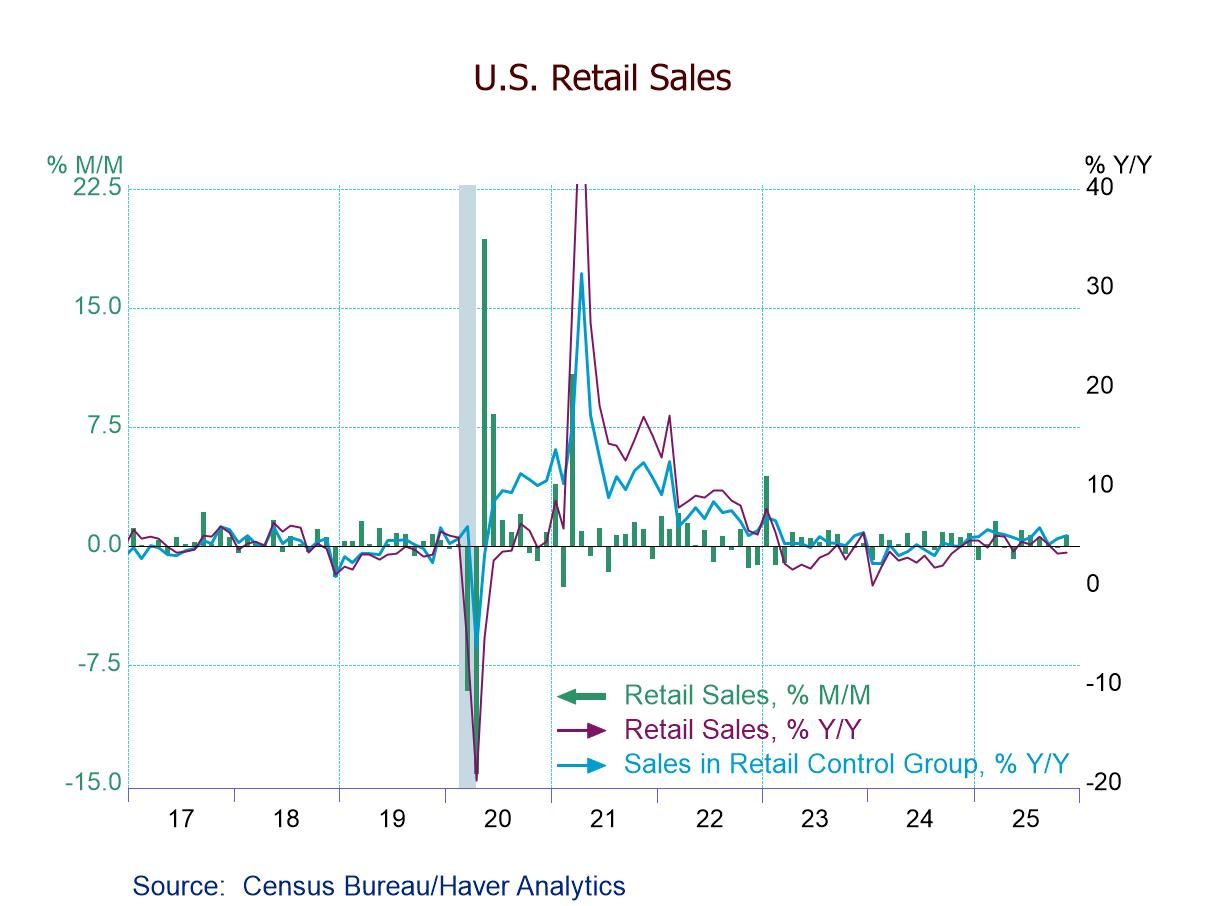 Global| Apr 14 2023
Global| Apr 14 2023Charts of the Week (Apr 14, 2023)
by:Andrew Cates
|in:Economy in Brief
Summary
This week the International Monetary Fund (IMF) trimmed its global growth outlook for this year and flagged downside risks from a potential further flare up of financial instability. Lingering concerns about high inflation and tight labour markets were also emphasised, not least because a further monetary policy response might re-ignite financial market tensions. In our charts this week we pick up on these themes. We look, for example, at one of the factors that’s been driving banking sector stress and specifically the shift away from US bank deposits and into money market funds in recent months (in chart 1). We then turn to the uncomfortable trade-off between the outlook for profits and interest rates that’s recently established itself (chart 2). Next, we look at the equally uncomfortable messaging for global growth from this week’s sentix surveys of investor confidence (chart 3). More comfortable messaging is, however, now being signalled for the inflation outlook via the recent normalisation of supply chain pressures, an issue we assess next (in chart 4). And that messaging chimes too with recent data from Asia and specifically the weakness of China’s producer price inflation and South Korea’s exports (in chart 5). Finally, and in tune with some structural analysis in the IMF’s latest April Economic Outlook, we explore the links between demographics and long-term interest rates (in chart 6).
US money market flows and bank deposits Banking sector tensions have ebbed in recent weeks arguably in large part because of the underlying liquidity support that’s been offered by central banks, and the Fed in particular. But insofar as those tensions can be traced to higher interest rates and funding pressures there are reasons to remain concerned. Latest weekly financial flow data from EPFR, for example, suggest that inflows to money market funds have remained strong over the past few weeks (see chart 1). Recent data from the Fed, in the meantime, suggest that bank deposits have remained in retreat, declining at their fastest rate in the four weeks to March 29th since October 2001.
Chart 1: Money market fund flows and US bank deposits

The Blue Chip consensus for US profits and Treasury yields Against that backdrop a key question for investors concerns the willingness of central banks to continue tightening monetary policy in the face of financial stability risks and stubbornly high inflation. The latest April Blue Chip consensus survey underscores those risks. Expectations for the yield on 10-year Treasuries in 2023, for example, have edged down in recent months as forecasters have revised their expectations for short-term interest rates lower. But a key reason for those downward revisions relates to economic and financial instability and its implications for corporate profits in the months ahead. It is no coincidence, for example, that forecasts for interest rates have shifted down following a period where the outlook for US profitability has also been in retreat (see chart 2 below). How financial markets now evolve – almost by definition - will be determined by how this consensus for profits and interest rates now unfolds.
Chart 2: Blue Chip consensus forecasts for US corporate profits and 10 year yields

The global business cycle This week’s economic data in the meantime have been painting a gloomier picture of the global growth outlook. The April aggregation of the regional sentix surveys, for example, revealed another retreat in investors’ expectations for global economic growth in the period ahead even though assessments about the current economic climate improved. That combination, however, is normally associated with a downswing phase of the business cycle (see chart 3).
Chart 3: The global sentix survey: the current conditions and expectations index

US inflation and supply chain pressures On a brighter note this week’s data revealed a small downside surprise to US CPI inflation in March. From a peak of 9.1% y/y in June 2022, headline CPI inflation has now been in retreat for 9 consecutive months, a key reason for which concerns ebbing goods/commodity price inflation. This, in turn, can be largely traced to the normalisation of supply chains. The New York Fed now estimates that these global supply chain pressures were more than 1 standard deviation below normal in March. This contrasts with a peak in December 2021 when those pressures were estimated to be more than 4 standard deviations above normal (see chart 4).
Chart 4: Global supply chain pressures versus US goods price inflation

Dis-inflation in Asia’s export markets Another manifestation of this supply chain normalisation concerns Asia’s traded goods sectors. South Korea’s export values, for example, fell by 13.9%y/y in March in large part because of falling export prices. Equally, China’s PPI inflation – another good bellwether for traded goods price inflation – fell by 2.5%y/y in March partly thanks to a big retreat in upstream commodity-related sectors.
Chart 5: China’s PPI inflation and South Korea’s export growth

Ageing demographics and interest rates Finally, we make a nod in our last chart this week to some analysis in the IMF’s April Economic Outlook publication about the links between ageing demographics and long-term interest rates. IMF economists specifically argue that recent increases in real interest rates around the world are likely to be temporary (see IMF World Economic Outlook, April 2023. And a key reason (among several) for this concerns the impact of ageing demographics on savings and investment behaviour. That dependency ratios in advanced economies have typically risen over the last four decades as long-term interest rates have declined is in sympathy with this analysis (see chart 6 below and in which the data for the dependency ratio is inverted).
Chart 6: The dependency ratio in high income economies versus US 10 year Treasury yields

Andrew Cates
AuthorMore in Author Profile »Andy Cates joined Haver Analytics as a Senior Economist in 2020. Andy has more than 25 years of experience forecasting the global economic outlook and in assessing the implications for policy settings and financial markets. He has held various senior positions in London in a number of Investment Banks including as Head of Developed Markets Economics at Nomura and as Chief Eurozone Economist at RBS. These followed a spell of 21 years as Senior International Economist at UBS, 5 of which were spent in Singapore. Prior to his time in financial services Andy was a UK economist at HM Treasury in London holding positions in the domestic forecasting and macroeconomic modelling units. He has a BA in Economics from the University of York and an MSc in Economics and Econometrics from the University of Southampton.






